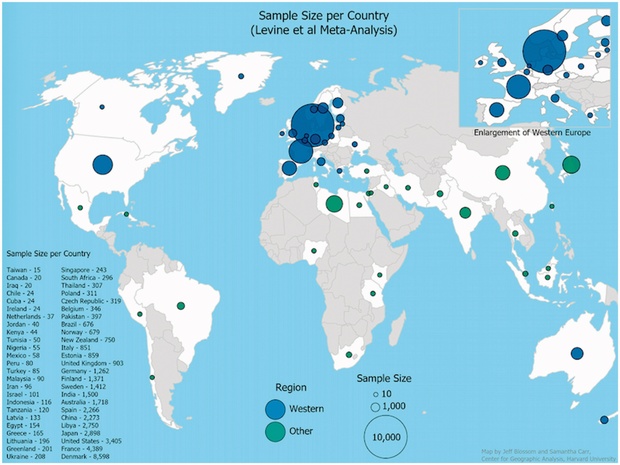As Carl Sagan once said, “extraordinary claims require extraordinary evidence.”
You may have recently read some extraordinary claims that total sperm count has dramatically declined among “Western” men and that endocrine disrupters - but only the synthetic kind, not natural ones - are the reason. The extraordinary evidence is lacking.
Scientists from the Harvard GenderSci Lab are putting the brakes on the alleged “apocalyptic” trends in male reproduction.
The peer-reviewed Harvard paper, by Marion Boulicault, Sarah Richardson, and colleagues, re-evaluated the meta-analysis by authors Levine et al. in 2017 and found significant inconsistencies and biases in the methods and assumptions used by Dr. Shanna Swan and colleagues to make their finding.
Boulicault and colleagues also propose a more plausible framework for interpreting population trends in human sperm counts that they believe offers “a more analytically rigorous, empirically driven” framework for interpreting population-level trends in human sperm counts than that posed by Levine and colleagues.
Importantly, the new examination of the same data and background literature as used in the 2017 meta-analysis casts doubt on the conclusions reached by its authors.

The number of sperm samples per country over the period 1973–2011 included in the 2017 meta-analysis. The global coverage is mottled and asymmetric and Levine et al. concede that sperm count in ‘Other’ countries is sparser than ‘Western’ countries but don't acknowledge inconsistent data in Western countries. Instead of applying to all men it can really only describe general population trends in sperm count within Denmark.
The new paper points to a number of things to consider before conclusions on decreases in sperm count or male fertility can be drawn.
- Current Western average sperm counts are well within the normal range defined by the World Health Organization (WHO) (15 to 259 million per ml).
- Linking male infertility to sperm count is too simplistic. Men with low sperm counts can conceive, while others with higher counts cannot.
- If there was an increase in male infertility, it would show up in the fertility data. Yet, there is no proportional increase in infertile men that would be expected if the decline in sperm count claimed by Levine and colleagues was really occurring.
- The use of arbitrary categories like “Western” (predominantly white) and “Other” obscures key underlying data. For example, if the data is evaluated by specific geographic region, there was no sperm count decline for fertile North American men. Yet, there would have to be if endocrine disruption was happening.
- There appears to be no causal relationship between “endocrine disruptors” — exogenous chemicals that have been studied for their potential to mimic endogenous hormones and bind to protein receptors — and any barometer of sperm health, including sperm count, sperm motility, and fertility.
- Levine and colleagues had no data to support the claim that ‘”Western” men face increased exposure to environmental pollutants compared to men in “Other” nations, as explanation of the differences between sperm counts. Instead, since 1973, exposures to environmental pollutants have plummeted. Data on exposure would be required to support a claim that exposure is connected to any sperm count decline.
As the Harvard authors
conclude, “researchers must take care to weigh hypotheses against alternatives
and consider the language and narrative frames in which they present their work.”
Objective, sound science
should drive decision-making and public discourse. Presentation and
interpretation of scientific studies must be done carefully to avoid making provocative
yet unfounded public claims, especially when a study has not established sufficient
causal links to human health effects.
To do otherwise is both concerning and a
disservice to the public.






Comments